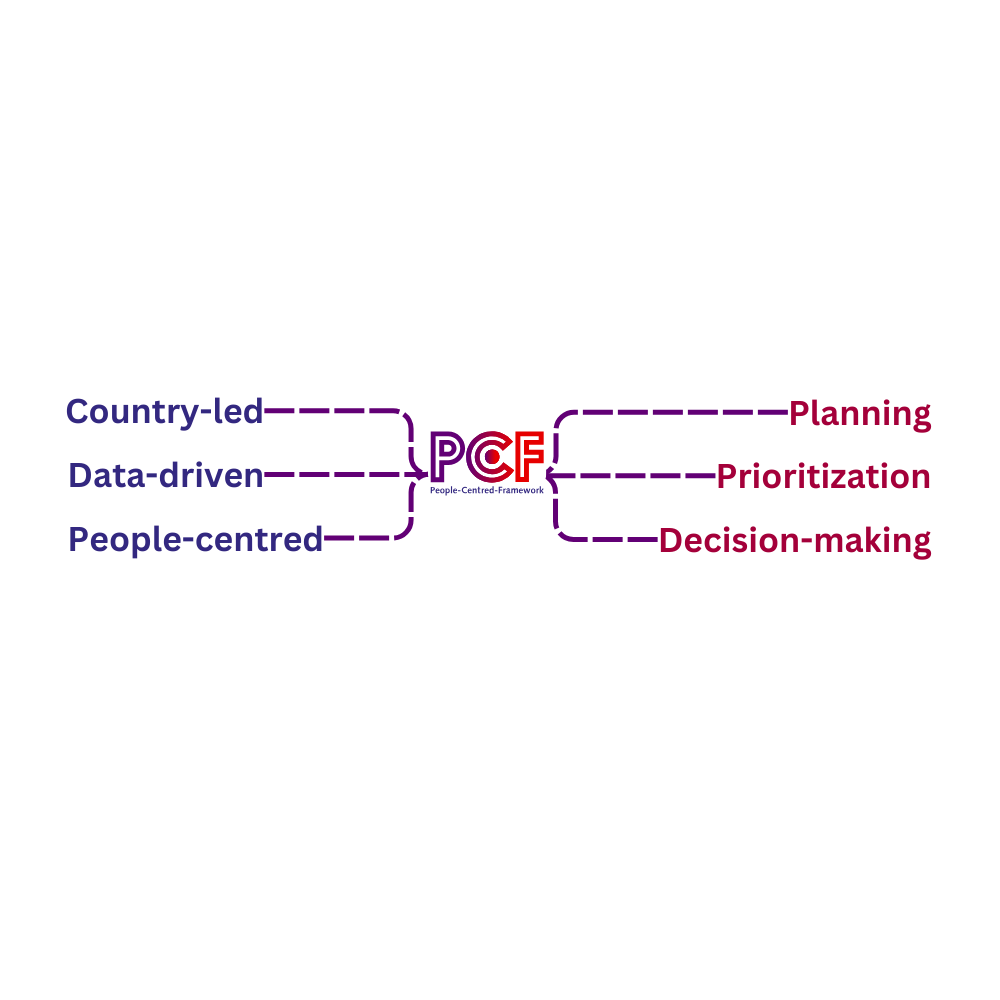Introduction to PCF
The PCF approach is a widely recognized method for tackling the TB epidemic. It has helped many countries worldwide improve outcomes in the fight against TB. This approach for National Strategic Planning (NSP) was originally piloted in Kenya and then applied in 9 early adopter countries: Cambodia, Ethiopia, Ghana, Indonesia, Namibia, Rwanda, Uganda, UR Tanzania, & Vietnam.
In addition to using the PCF approach during the NSP development process, some countries have tailored the PCF approach for specific situation analysis and planning purposes. For example, Ghana used the approach to optimize their Global Fund portfolio before applying it to their NSP planning process. The Philippines used it to harmonize Technical Assistance, while Pakistan used it to plan sub-national programs.
The PCF Approach is a powerful tool in the fight against TB, enabling countries to develop and implement optimized, responsive, and resilient National Strategic Plans (NSPs) for TB programming. By aligning with the WHO End TB Strategy and the Sustainable Development Goals (SDG), we aim to accelerate progress in the fight against TB.
The PCF approach was first presented as a White Paper titled “Improving the Use of Evidence for TB Program Planning: a framework for people-centred data consolidation and policy translation” at the WHO Global Task Force on TB Impact Measurement – Seventh Task Force meeting, 1-4 May 2018, in Glion-sur-Montreux, Switzerland.
The ensuing People-Centred Framework for National Strategic Planning (PCF4NSP) project funded by the Gates Foundation and implemented by KNCV built on the principles of the People-Centred Framework for TB programming (PCF4TB) and the experiences from the use of data consolidation and policy translation across the TB care continuum as partially piloted in 4 countries and the principles described in the White Paper.
PCF Theory of Change
The PCF approach is rooted in the Theory of Change framework, which guides the entire process of identifying and addressing the need for change in policy, strategy, and programming. The approach emphasizes the importance of understanding the existing and preferred future situations and uses this knowledge to inform the use of evidence in decision-making.
This holistic approach is designed to facilitate optimal collaborative action and adaptive planning, ensuring that interventions are tailored to the specific needs of different communities and contexts. By using a Theory of Change framework, the PCF approach promotes critical questioning, transparency, and learning at all levels, ultimately leading to more effective and impactful public health interventions.
Public health interventions should not be developed based on a theoretical model alone.
The process started with a detailed situational assessment supported by research and consistent daily observations. Application of a Theory of Change led to a common understanding of how change occurs, creating awareness of different values among stakeholders, and generating ownership of NSPs and GF applications, thus supporting the decision-making process on which solutions should be prioritized for a bigger impact. To formulate a new NSP, an assessment of the performance of the current strategic plan needs to take place.
The approach includes three major components
- Analysis of evidence along the continuum of care,
- Prioritization of interventions to optimize the impact of investments, and
- Program needs are the basis for evidence generation.
The application of the People-Centred Framework approach facilitates a systematic process of country-led, data-driven, and people-centred planning, prioritization, and decision-making.

Learn more practical information in our PCF Knowledge Hub HERE.